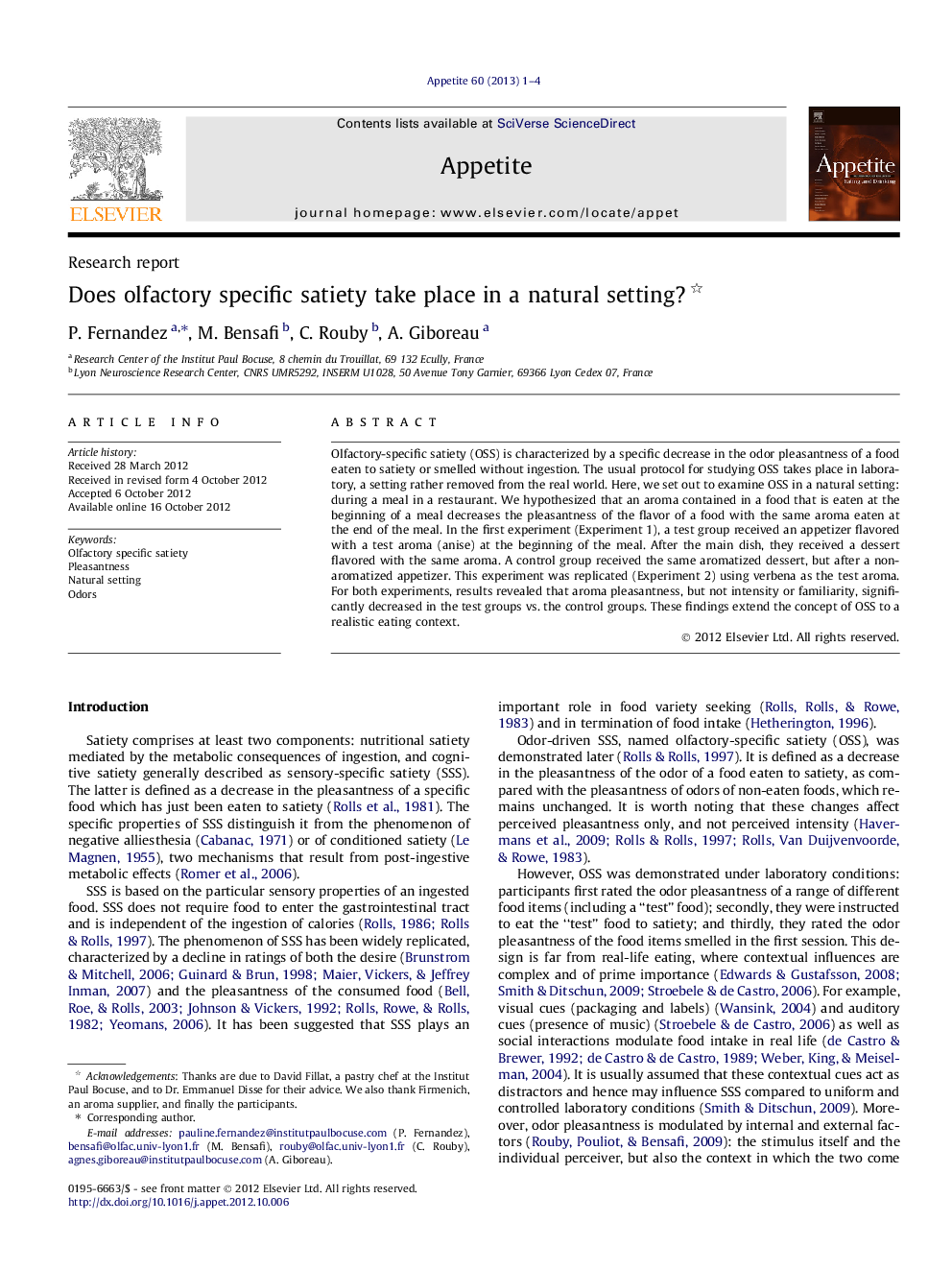| Article ID | Journal | Published Year | Pages | File Type |
|---|---|---|---|---|
| 939757 | Appetite | 2013 | 4 Pages |
Olfactory-specific satiety (OSS) is characterized by a specific decrease in the odor pleasantness of a food eaten to satiety or smelled without ingestion. The usual protocol for studying OSS takes place in laboratory, a setting rather removed from the real world. Here, we set out to examine OSS in a natural setting: during a meal in a restaurant. We hypothesized that an aroma contained in a food that is eaten at the beginning of a meal decreases the pleasantness of the flavor of a food with the same aroma eaten at the end of the meal. In the first experiment (Experiment 1), a test group received an appetizer flavored with a test aroma (anise) at the beginning of the meal. After the main dish, they received a dessert flavored with the same aroma. A control group received the same aromatized dessert, but after a non-aromatized appetizer. This experiment was replicated (Experiment 2) using verbena as the test aroma. For both experiments, results revealed that aroma pleasantness, but not intensity or familiarity, significantly decreased in the test groups vs. the control groups. These findings extend the concept of OSS to a realistic eating context.
► OSS is investigated in a natural setting: during a meal in a restaurant. ► The effect is replicated in two different experiments using different aromas. ► We examine changes in aroma pleasantness, intensity and familiarity. ► Aroma pleasantness significantly decreased in the test groups vs. the control groups.
